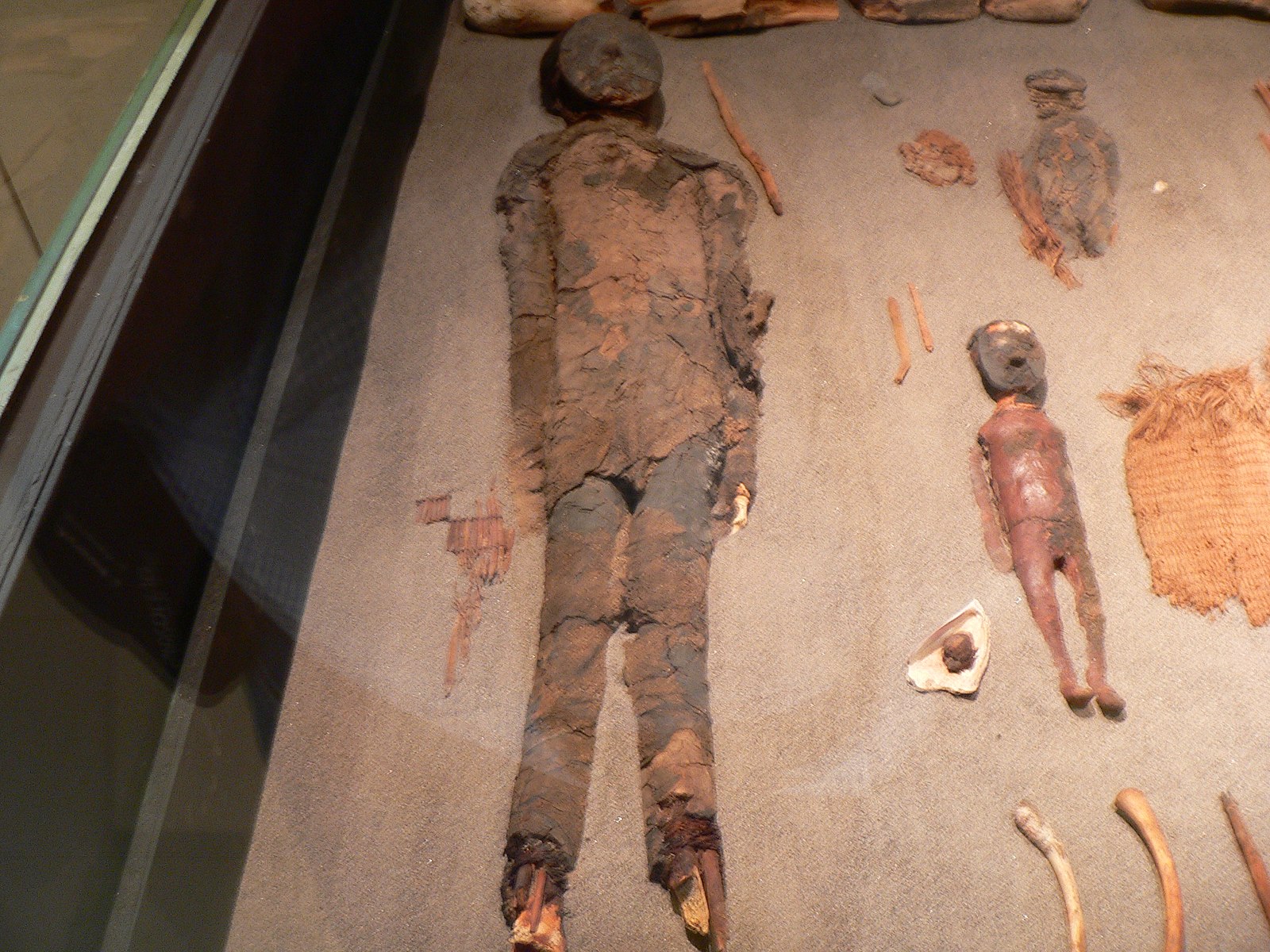Chinchorro Mummies

Annotation
The Chinchorro mummies, named for the Chinchorro people of current-day Chile and Peru, are the world’s oldest known examples of intentional mummification. predating Egyptian examples by almost 2,000 years. Hundreds of mummies were discovered and radiocarbon dating placed their age around 7,000 years old. The mummified bodies provided researchers with evidence of the main diet being seafood and early evidence of tattooing in the Americas.
The Chinchorro were a pre-ceramic culture whose people were sedentary and lived off fishing and hunting-gathering. The mummification process developed for millennia, with evidence from as early as 5,000 BCE and the suggested peak near 3,000 BCE. Those preparing the dead bodies for mummification placed the bodies outside in the dry climate to help conserve the bodies. They also removed the internal organs and replace them with fibers or animal fur and used sticks to keep the body straight; sometimes, the flesh was removed and replaced with clay. These processes remained relatively stagnant. The bodies were also sometimes painted either black or red using pigment from minerals, and black hair could be attached to the mummy’s head, and a mask placed on the face.
The Chinchorro mummification process was not only older than the Egyptian mummification process that is more widely known but also remarkably a different process, with no oil or bandages. The Chinchorro also mummified bodies from all classes and of all ages, unlike the Egyptians who usually preserved only the elite.
Credits
"Momia Chinchorro," Wikimedia Commons, February 2008, https://commons.wikimedia.org/wiki/File:MomiaChinchorro.jpg.